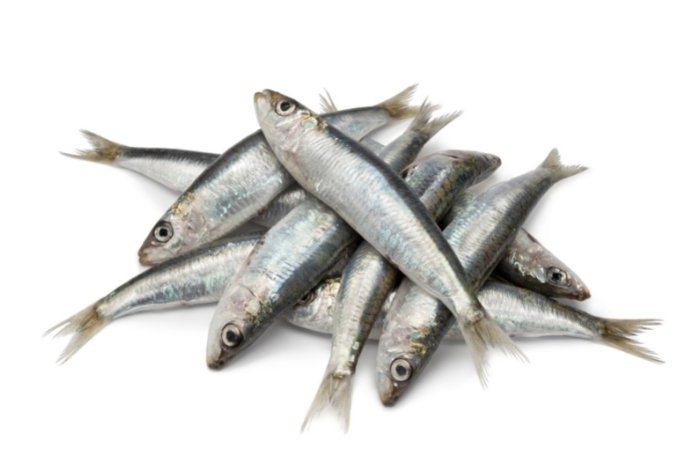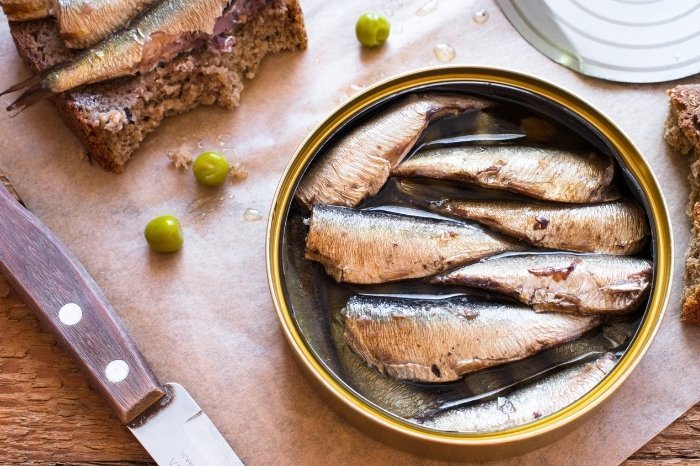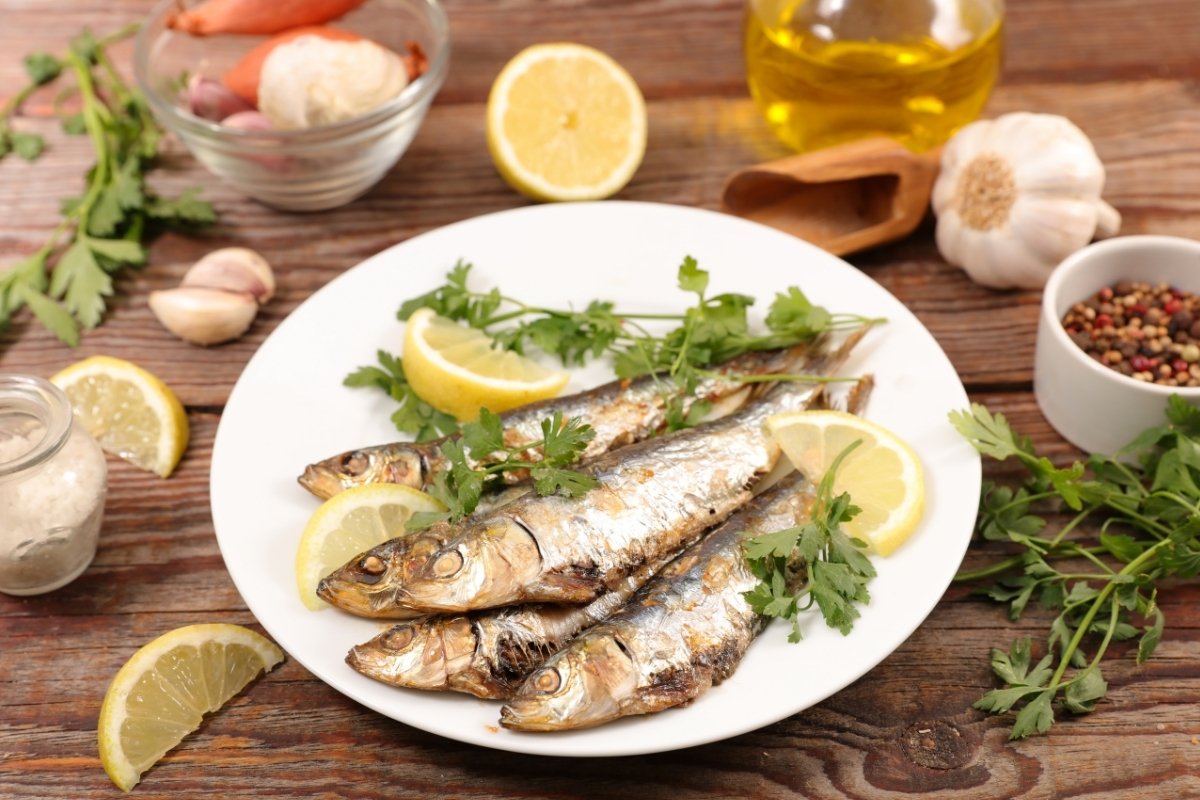Last Updated on October 7, 2024
Sardines make for healthy seafood and it doesn’t matter whether you source them fresh or already process, they could offer a great deal of satisfaction. Packed with numerous health benefits, they could be a good way to get in more nutrients into your diet. But many people, are not sure if they can eat sardine bones and they ask themselves this question “Can you eat sardine bones?”.
If you are one of such persons, you likely will find the answers you need in the sections below. But before we get into the details, let’s first talk about your favorite seafood.
Table of Contents
What Are Sardines?
Not your regular aquatic animal, this tiny oily fish is popular for its meat which is high in protein. Known to move in schools and found in the coastal region, they often serve as food for the bigger sea animals. The soft-boned saltwater fish is also sold widely in cans for consumption by humans. They get their name from Sardinia island in the Mediterranean where they can be found in large amounts.
While they can be prepared raw by cooking them on a Himalayan salt block or directly in the oven like any other fish. They are popular as can foods. They are usually packed in cans of oil, tomato sauce, or water which help to keep them fresh for when they are ready to be served.

What Do Sardines Taste Like?
They have an original fishy taste that happens to be particular to this breed of fish. But most people, avoid the fishy taste as they are considered too oily or strongly smelly. However, they have a good smell and go well with many aquatic delicacies. They can be enjoyed any time of the day when prepared properly. Although they do not require much to prepare, you want to do it right to enjoy the high nutrition they provide to the body.
Find more Healthy Recipes by Clicking Here:
How To Eat Canned Sardines?
Have you ever wondered how to eat sardines? There is no special way to enjoy your favorite seafood, but you want to be sure that you purchase quality sardines. Packed in cans mostly, you want to be critical about the safety of the meat. Most likely, you will have to get them from the store except you are lucky to find them raw. And in most cases, you will have to visit the Meditteranean region where they are harvested from the water.
They contain a good amount of salt which usually helps to preserve them for future use. When packed properly, they can last a long time. Still, you want to check the expiry information to guide you on how quickly you can use it.
Cuisinart CCO-50BKN Deluxe Electric Can Opener, Black
There are several ways to prepare them in the kitchen. When harvested fresh, they can be smoked or grilled to enhance the fishy smell and taste. They can be seasoned with parsley, lemon juice, sea salt, or by including a hint of chili to spice it up. The soft bones can be chewed without even noticing them in your meal. But you want to be careful as the soft bones could easily choke you if you miss them while chewing.
And as a matter of safety, you want to chew your fish properly. If you happen to prepare them fresh from the water, you want to ensure that they have been deboned properly. You want to do the same thing when feeding kids. Get out the soft bones gently to prevent them from getting stuck in the throat. You could also opt to have them eat the sardine bones as it is a good source of calcium.
Do Sardines Have Any Health Benefits?
As you may wonder, are there any health benefits from enjoying a good supply of sardines? The truth is when prepared properly and carefully, you can enjoy a rich serving of fresh sea fish whether you include sardines or herrings in your meals. Some of the health benefits of sardine nutrition include
Rich Source Of Calories
A can of sardines can provide you with up to 190 grams of calories which is enough to get you started for a productive day. Whether you enjoy them in the mornings or at night, you can be sure to get is some of your daily calorie servings for better health. And if you are looking to cut down on your daily calorie intake, you can find it to be just right for you.
Rich In Fat
Known to have just the right balance of fat nutrition, a can of sardines can provide you with up to 18 grams of fat. This includes both saturated, monounsaturated, and polyunsaturated fat which can help with providing a good supply of daily energy. You want to be careful how much you consume regularly if you are looking to cut down on body fat. Still, you shouldn’t have to worry about your weight with regular consumption when you watch what you eat
Good Source Of Fish Protein
Aquatic animals are known to be a good source of protein, and sardines can provide you with up to 23 grams of protein from just one can. And this can help with maintaining healthy blood vessels, organs, and muscles. You will surely be getting a lot of health benefits from consuming sardines regularly, and it could help improve brain health, fight depression, and bump up your immune system.
Can You Eat Sardine Bones?
The meat and bones are edible and they are soft enough to be chewed by kids. But due to the tiny nature of the bones, you want to be careful when consuming them. The best choice is to prepare them and chew them properly. You want to also watch out for any of the bones when you swallow. Together with the meat, they provide you with the nourishment you need to get on with the day’s tasks.

If you worry about the bones, you can opt for a canned option that contains sardines that have been deboned. This boneless option could help with avoiding the discomfort that comes with bones getting stuck in the throat. But you should know that if you eat sardine bones, it could help add to the calcium content of the meal. Still, since they are soft and easy to chew, you won’t have any problem if you choose to enjoy them right from the can or directly from the grill when prepared fresh.
How Do You Get Bones Out Of Sardines?
Sardine bone removal is a fairly straightforward technique that involves only a few tools and a bit of patience. Feel free to follow these steps:
- Begin by holding the sardine by the head and gently pulling it away from the body. This should remove the spine and any large bones that are attached to it.
- Next, using your thumb, gently press down on the sardine to flatten it and expose the tiny bones. This will make it easier to see and remove the bones.
- Use a pair of tweezers or a small, sharp knife to carefully remove any remaining bones. Pay particular attention to the area around the sardine’s belly and sides, as these areas are likely to have the most bones.
- Once you have removed as many bones as possible, be sure to rinse the sardine under cold water to eliminate any remaining bone fragments.
- Dry it with a paper towel and slice or chop it according to the recipe.
There are a few additional methods you may try besides using tweezers or a knife to remove the bones. Some people find it helpful to carefully pick the bones out of the sardine with their fingers, while on the other hand, some others prefer to use a small fork or toothpick to poke and prod at the bones, carefully pulling them out of the flesh.
So, whatever strategy you choose, it is critical to be patient and take your time. Removing the bones from sardines may be quite a time-consuming process, but the result is well worth the effort.
How Much Calcium Is In Sardines Without Bones?
Sardines are one of the best sources of calcium, with a 3.75-ounce (106-gram) serving, providing about 181 milligrams of the mineral. Few can surpass that. However, it is important to note that the amount of calcium in sardines usually depends on a variety of factors, including the type of sardines you use, whether they are fresh or canned, and whether they are cooked or raw.
First of all, we must say that sardine bones are particularly high in calcium, with a 3.75-ounce (106-gram) meal delivering roughly 1,300 mg. The level of calcium in deboned sardines is significantly reduced, but this does not mean that they should be avoided because sardines still contain some calcium in the meat, so even without the bones they can be a good source of minerals.
It’s recommended to use a credible source, such as the USDA National Nutrient Database or a nutrition information database, to acquire an exact assessment of the calcium content of sardines without bones. These resources can give precise nutrition information for a wide range of foods, including sardines with and without bones.
Finally, keep in mind that sardines cooked in water or oil may have a slightly lower calcium content compared to raw sardines, all because some calcium usually leaks into the cooking liquid.
Does Lemon Juice Dissolve Fish Bones?
The answer to this question is negative. There’s no way a lemon is going to dissolve fish bones. Fish bones are made of a hard, porous material called hydroxyapatite, which is known to be resistant to the effects of acidic substances such as lemon juice. Although truth is told, lemon juice can soften fish flesh and aid in the removal of minor bones, it is not effective at dissolving larger bones or the spine.
What Type Of Fish Does Not Have Bones?
There are several types of fish that don’t have bones or at least don’t have visible bones. Put them in your shopping cart next time, because they are the most convenient and delicious option for all those who prefer not to deal with bones when eating fish.
- Eel, squid, and octopus
It is important to note that although these types of fish have internal bones, they aren’t visible and therefore don’t need to be removed before eating.
- Boneless fish fillets
These are pieces of fish that have been carefully filleted to remove the bones, leaving only the flesh behind, and can be made from a range of species, including tilapia, cod, and haddock.
- Canned Fish
Tuna and salmon, for example, are usually sold in small pieces or as a paste, and must be deboned during the canning process, and are therefore ready to be served right away.
After all, you know what they say, prevention is better than cure? That’s why it’s always a good idea to check and remove all bones before eating fish, regardless of the type.
How Do You Get Fish Bones Out Of Gum?
If you have a fish bone stuck in your gum, feel free to use the following methods to remove it:
- Rinse your mouth with warm water to loosen any debris and help flush out the bone.
- Gently remove the bone using your toothbrush or a dental floss pick. Be extremely gentle, and careful, and take caution not to injure your gums or teeth in any way when attempting to remove the bone.
- If the bone is still stuck, try carefully loosening and removing it using a toothpick or a thin, pointed item, such as a needle. Be careful not to push the bone further into your gum or hurt yourself while attempting to remove it.
- If the bone is still stuck or if you are unable to remove it, be sure to see your dentist, who should be able to safely and effectively remove the bone while protecting your gums.
How Many People A Year Die From Fish Bones?
It is difficult to accurately determine how many people die each year from various complications related to fish bones, as this information is not typically reported in a way that would allow for easy calculation. Fish bones can cause injury or death in several ways, and the most common ones include choking, aspiration, or infection, but unfortunately, the vast majority of cases aren’t usually reported or documented in a centralized database.
Do Sardines Have Bones? – Final Note
Sardines make for a rich source of animal protein and are packed with other nutrients. They could help provide the body with proper nourishment. You want to ensure that you chew them properly and buy healthy options that have been preserved properly.

Barbara is an environmental activist and sustainability advocate who loves living green and sustainable. She firmly believes in reducing her carbon footprint and has been making great strides towards achieving this goal. Barbara is a vegan and avid recycler and has been actively involved in community gardens and other green initiatives. She is passionate about spreading awareness about the importance of living in a sustainable and eco-friendly manner. Barbara is always looking for ways to make a difference in her community and beyond. She is a huge advocate for preserving nature and the planet for future generations.


